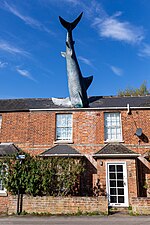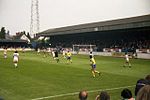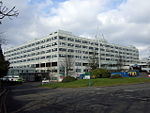A.F.C. Hinksey
2006 establishments in England2014 disestablishments in EnglandAssociation football clubs disestablished in 2014Association football clubs established in 2006Defunct football clubs in England ... and 3 more
Defunct football clubs in OxfordshireHellenic Football LeagueOxfordshire Senior Football League
A.F.C. Hinksey was an English football club in Oxford. The club last played in the Hellenic Football League Division One East and folded in 2014.
Excerpt from the Wikipedia article A.F.C. Hinksey (License: CC BY-SA 3.0, Authors).A.F.C. Hinksey
Hounsfield Crescent, Oxford
Geographical coordinates (GPS) Address Nearby Places Show on map
Geographical coordinates (GPS)
| Latitude | Longitude |
|---|---|
| N 51.7698 ° | E -1.2056777777778 ° |
Address
Hounsfield Crescent 1
OX3 9UF Oxford
England, United Kingdom
Open on Google Maps









